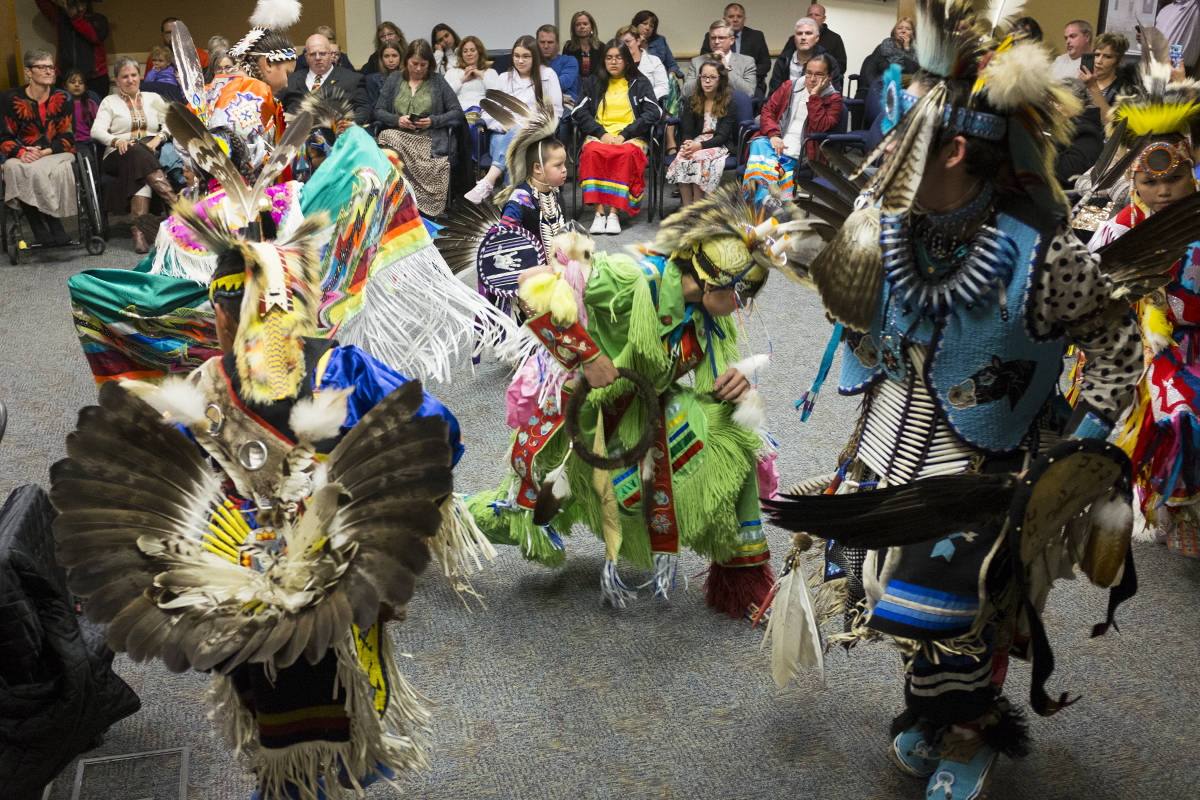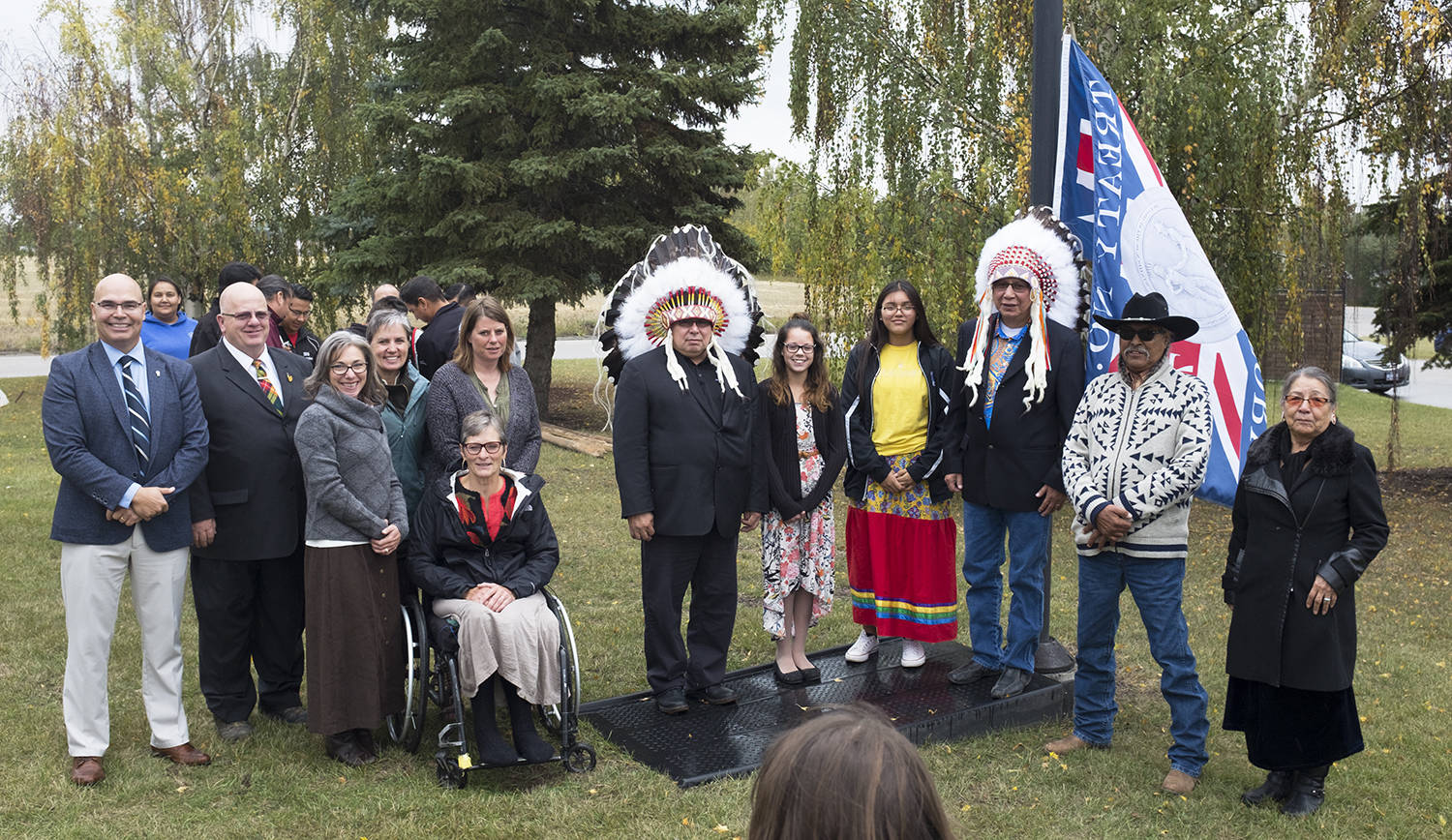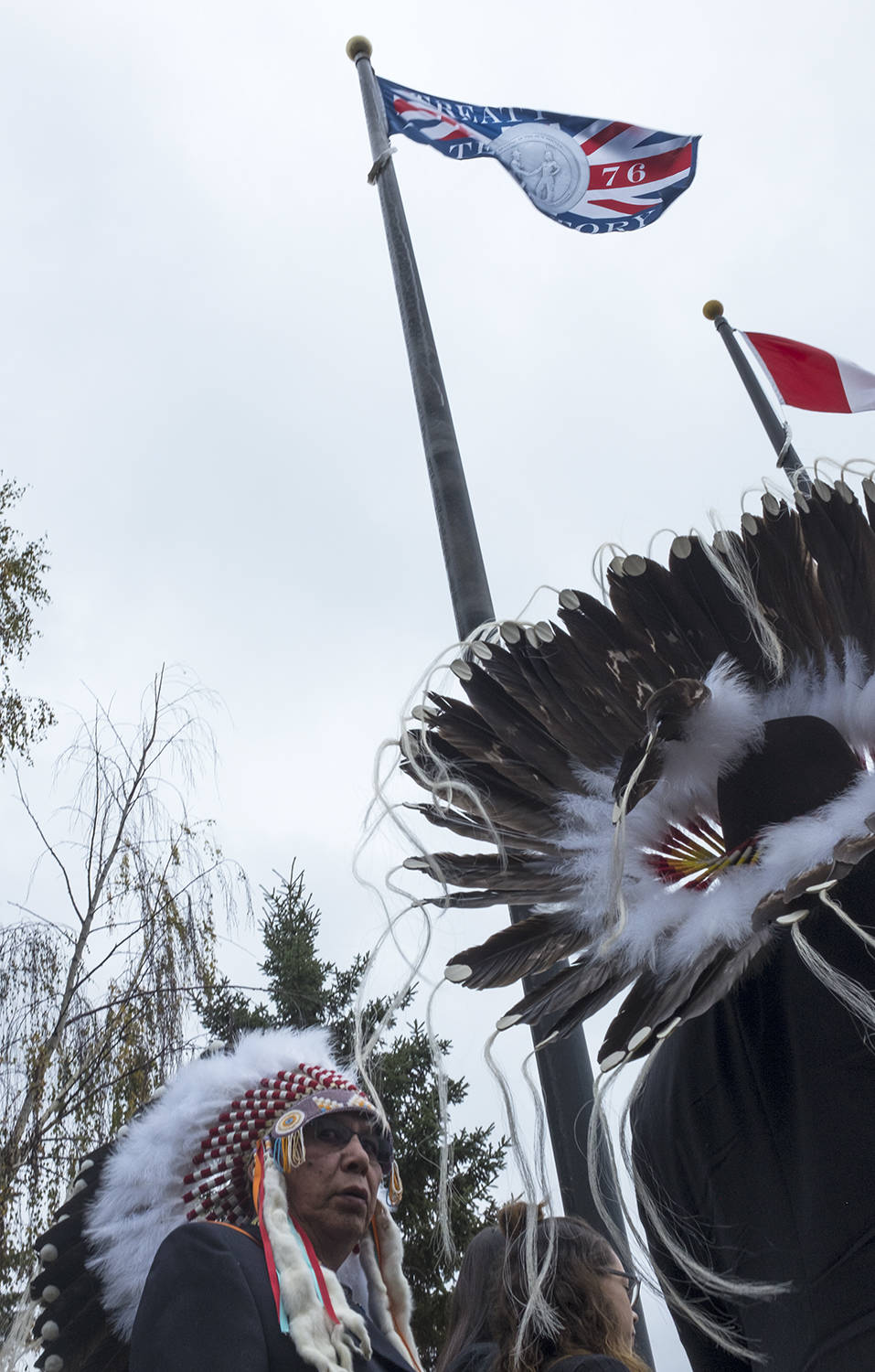Sometimes the raising of a flag means much more than just a simple ceremony.
That is the case with Wolf Creek Public School’s (WCPS) Treaty 6 flag raising, which marks a clear step towards reconciliation.
The treaty flag raising is the first of its kind held at WCPS and is intended to send a clear message to First Nations communities that the school district is doing its part.
The four chiefs from Maskwacis were invited to the ceremony, which included drum songs and dancing, and Montana First Nation Chief Leonard Standing On The Road said the flag raising is a good reminder of the past.
“We are all treaty people,” said Standing On The Road, adding that it’s a move that will benefit future generations.
When the chiefs first signed the treaties, their goal was to ensure safeguard First Nations people and their culture. “We’re only a small part of what’s to come in the future,” he offered.
Louis Bull Tribe Chief Irvin Bull was also in attendance offering his gratitude to be able to witness the flag raising. This type of acknowledgement has value to the Cree people on Treaty 6 territory.
Elder Josephine Small is a member of the FNMI Learning Supports at WCPS, and her hope is to bring more First Nations content into students’ learning. This type of learning is quite new in the world of Alberta’s, and Canada’s, education.
“I love it, said Small of her feelings on these new developments and the flag raising. “When I went to school here, First Nations children, you weren’t even looked at.”
She went off-reserve to Ponoka to receive her education and currently finds herself in the same position, but this time as an educator of the Cree culture. It’s a complete role reversal that she’s excited about.
Raising the Treaty 6 flag is a further role reversal.
And the First Nations students themselves are asking for Cree learning to be part of their education at WCPS. It’s an exciting time.
For others, raising the Treaty flag is something that’s been a long time coming.
“It’s about time,” said elder Effie Janvier, adding that she sees it as a positive experience.
“As human beings we’re all different colours,” added Janvier.
The Treaty 6 flag raising is done from a perspective of sincerity, added WCPS board chairperson Pam Hansen.
“It’s a step forward in actually recognizing what was signed in Treaty 6,” she explained. “And moving forward with reconciliation.”
Her hope is more school divisions not only offer treaty recognition, but also move forward. “I just think it’s important to build relationships in a meaningful way.”
Children were a big part of the ceremony with many in regalia during the drum songs. They demonstrated their Cree culture with that dancing.
Ryland Mendoza, 13, is a seventh generation family member to Chief Bobtail, who was part of the ceremony. For her, seeing the flag raising is about gaining understanding.
“I just want to show that people are on Treaty 6 land and we’re all together as one,” said Mendoza.
What she’s seeing as a First Nations student is more discussion and learning about Indian Residential Schools, but she feels more could be done. “They don’t really teach inside of residential schools.”
“They never really talk more about how First Nations kids were treated.”
Hansen said that while there have been no formal discussions related to formal Cree classes, that is the ultimate goal.





